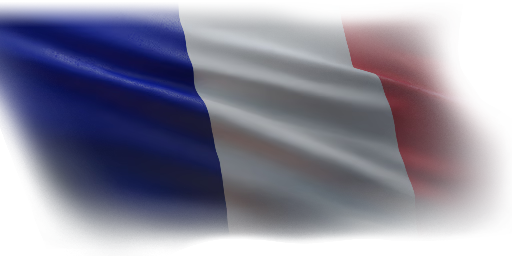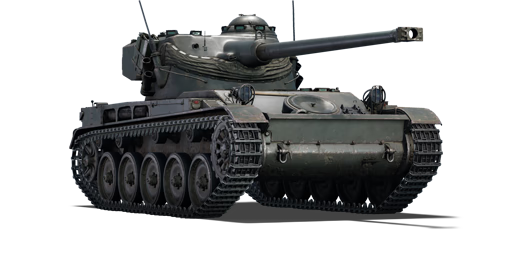



The AMX-13/75 FL-10 is the first variant of the AMX-13 light tank family. The tank was designed in 1946 by the Atelier de Construction d'Issy-les-Moulineaux (AMX) to meet a request for an armoured vehicle that could be air-dropped to support paratroopers. The first prototype went into service in 1948. Torsion bar suspension with five road wheels and two return rollers was used on the compact chassis; the engine is positioned on the right side of the tank, with the driver on the left. It has an unusual two-part FL-10 oscillating turret that contains the main armament and allows the entire upper turret to adjust elevation. The commander and gunner sit in the turret, which is located in the rear of the vehicle. The 75 mm SA 50 L/57 tank gun was autoloaded and fed by two six-round magazines situated in the turret bustle on either side. The crew could engage targets quickly due to the 12 rounds available in the drum magazines; however, once those rounds were expended, the vehicle commander and gunner could either manually refill them from within the turret or retreat to cover and reload shells from outside the vehicle through hatches above. It was exported to over 26 more countries. Over a hundred variants exist, including prototypes and export variants. Many of these variants, such as the self-propelled gun (SPG), self-propelled anti-aircraft (SPAA), armoured personal carrier (APC), and anti-tank guided missile (ATGM) carrier, comprise their own separate families.
Introduced in Update 1.75 "La Résistance", the AMX-13/75 FL-10 is a very competitive light tank that can reach strategic positions on the battlefield very quickly. Due to its low profile, it may hide behind various obstacles, preventing opponents from discovering it. The most effective way to employ this tank is to keep it in a hull-down position behind a hill on the map's border; frontal engagements with enemies are not recommended. Its autoloader and high-velocity ammunition allow it to eliminate multiple opponents in a short period of time. Since the shell lacks explosive filler, it is vital to target critical components such as the target's tank gun barrel, gun breech, or ammunition rack. The autoloader and quick turret rotation allow for quick switching between enemy targets during combat, while the smoke grenades allow for a speedy retreat if the situation becomes too perilous.
| Ammunition | Type | Armor penetration (mm) at a distance: | |||||
|---|---|---|---|---|---|---|---|
| 10 m | 100 m | 500 m | 1000 m | 1500 m | 2000 m | ||
| APBC | 182 | 178 | 162 | 143 | 127 | 113 | |
| APCBC | 202 | 198 | 180 | 159 | 141 | 125 | |
| HE | 15 | 15 | 13 | 12 | 11 | 10 | |
| Belt | Belt filling | Armor penetration (mm) at a distance: | |||||
|---|---|---|---|---|---|---|---|
| 10 m | 100 m | 500 m | 1000 m | 1500 m | 2000 m | ||
| AP/AP/T | 13 | 12 | 7 | 3 | 2 | 0 | |












Mobility | |
|---|---|
Protection |
|---|
Firepower | ||
|---|---|---|